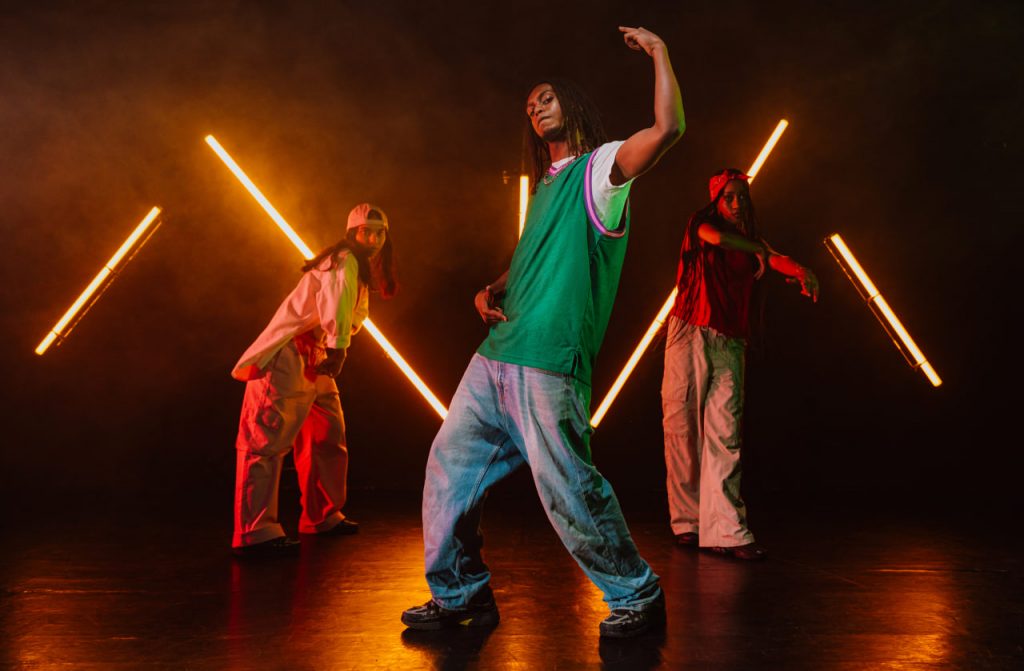Dance is a universal language that transcends words, allowing individuals to express emotions, tell stories, and unleash creativity in a way that no other art form can. Whether through structured choreography or spontaneous freestyle movements, dance provides an outlet for self-expression, fostering confidence and individuality. Let’s explore how dance can unlock creativity and transform the way we connect with ourselves and others.
Dance as a Creative Outlet
Creativity is not just for artists, writers, or musicians—everyone has the ability to be creative, and dance is one of the most accessible ways to tap into this inner potential. Through movement, dancers can explore new ideas, experiment with different styles, and push the boundaries of self-expression.
1. Storytelling Through Movement
Dance allows people to communicate emotions and narratives without words. Whether it’s a ballet performance that conveys love and loss, a hip-hop routine that tells a personal journey, or a contemporary piece that captures raw emotion, movement has the power to tell deep and compelling stories. Unlike verbal communication, dance expresses feelings in a way that is both personal and universally understood.
2. Freestyle and Improvisation
Structured choreography is essential in dance, but improvisation plays an equally important role in unlocking creativity. Freestyle dance encourages spontaneity, allowing dancers to move without restrictions and follow their instincts. This form of movement is not only liberating but also helps dancers discover their unique style and develop confidence in their artistic choices.
3. Breaking Routine and Thinking Outside the Box
Dance challenges the mind to think beyond conventional movement patterns. Whether it’s combining different dance styles, creating new choreography, or interpreting music in unexpected ways, dance helps break habitual thinking. This ability to innovate extends beyond the dance floor, influencing creative problem-solving skills in everyday life.
The Role of Music in Creative Dance Expression
Music is a fundamental part of dance, serving as both inspiration and a guiding force for movement. The rhythm, melody, and energy of music influence how dancers interpret and express emotions.
1. Experimenting with Different Genres
Dancing to various music genres—from classical and jazz to electronic and hip-hop—encourages versatility and broadens creative horizons. Each genre carries its own rhythm and mood, challenging dancers to adapt their movements and explore new dynamics.
2. Using Music as an Emotional Trigger
Music has a profound impact on emotions, and dancers often use it as a tool to channel different feelings. Slow, melancholic melodies might inspire fluid and expressive movements, while upbeat, high-energy tracks can lead to powerful and explosive choreography. Learning to connect movement with music enhances both the artistic and emotional depth of dance.
3. Dancing Without Music: A Pure Creative Experience
Although music is a key component of dance, moving without it can be an incredible exercise in creativity. Silent dancing forces individuals to rely on internal rhythms and explore movement purely based on emotion and intention, rather than external beats. This approach fosters deeper self-awareness and originality in movement.
How Dance Builds Confidence in Creative Expression
Many people struggle with self-expression due to fear of judgment or insecurity. Dance provides a safe and supportive space to break free from these limitations, helping individuals gain confidence in their unique voice.
1. Overcoming the Fear of Judgment
Stepping onto the dance floor, whether alone or in front of an audience, requires courage. The more dancers push past the fear of being watched or making mistakes, the more they develop confidence in their creative abilities. Over time, this self-assurance extends into other areas of life, from public speaking to personal interactions.
2. Celebrating Individuality
Every dancer has a unique style, shaped by their personal experiences, body movements, and artistic influences. Dance celebrates individuality, encouraging people to embrace their differences and express themselves authentically. There is no “right” way to dance—only what feels true to the dancer.
3. The Power of Performance
Performing in front of others is a powerful way to strengthen creative expression. Whether in a professional setting, a community event, or simply dancing with friends, sharing movement with an audience helps dancers connect with their emotions and communicate their artistic vision more confidently.
Conclusion: Dance as a Lifelong Creative Journey
Dance is much more than physical movement—it is a form of personal expression, a tool for creativity, and a means of connecting with emotions and ideas. Whether through storytelling, improvisation, or musical interpretation, dance unlocks the imagination and encourages people to embrace their unique artistic voice. The beauty of dance is that it evolves with each dancer, growing and changing as they do. By continuing to explore movement, dancers embark on a lifelong creative journey filled with discovery, self-expression, and endless possibilities.
